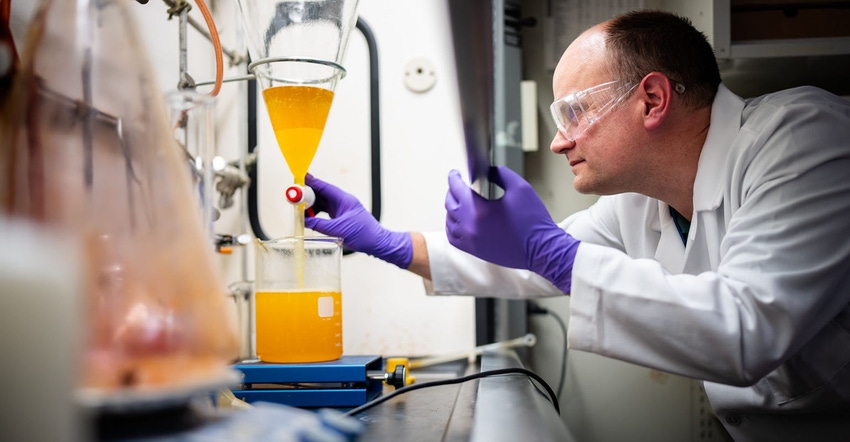Molecular Breakthrough Boosts Durability of Plastics
When incorporated into plastics, the molecule invented at Sandia Labs contracts instead of expanding when exposed to heat by changing its shape.
August 30, 2023

Plastic typically expands and contracts when exposed repeatedly to hot and cold temperatures, affecting its durability in a range of applications. Additives can mitigate this issue, but most products combine different materials, and managing fillers to compensate for thermal expansion mismatch gets complicated. Researchers at Sandia National Laboratories may have a solution — it all begins at the molecular level.
The team modified a molecule so that it can easily be incorporated into a polymer to change its properties. When the molecule is heated, it contracts instead of expanding by undergoing a change in its shape, explained research team leader Erica Redline, a materials scientist.
“When [the molecule is] added to a polymer, it causes that polymer to contract less, hitting expansion and contraction values similar to metals. To have a molecule that behaves like metal is pretty remarkable,” said Redline.
|
Research team member Eric Nagel showing the latest batch of material developed at Sandia National Laboratories. He is investigating ways to scale up production of the molecule. |
Reducing material deterioration
One of the biggest factors in material deterioration is repeated exposure from hot to cold temperatures and back. Most materials expand when heated and contract when cooled, but each material has its own rate of change. Polymers, for example, expand and contract the most, while metals and ceramics contract the least.
Complications ensue when several materials are used in a product, as is often the case.
“Take for example, your phone, which has a plastic housing, coupled to a glass screen, and inside that, the metals and ceramics that make up the circuitry,” Redline said. “These materials are all screwed, glued, or somehow bonded together and will start expanding and contracting at different rates, putting stresses on one another which can cause them to crack or warp over time.”
“I thought, what if I conjured up a perfect material. What would that look like,” Redline said.
Redline thinks she’s done it, with the help of her team: Chad Staiger, Jason Dugger, Eric Nagel, Koushik Ghosh, Jeff Foster, Kenneth Lyons, Alana Yoon and academic alliance collaborators Professor Zachariah Page and graduate student Meghan Kiker.
Applications in 3D printing and lightweighting
“The molecule not only solves current issues but significantly opens up design space for more innovations in the future,” said Dugger, a Sandia chemical engineer who has been looking at potential applications, especially in defense systems.
The invention also can be incorporated into different parts of a polymer at different percentages for 3D printing.
“You could print a structure with certain thermal behaviors in one area, and other thermal behaviors in another to match the materials in different parts of the item,” Dugger said.
The molecule also has potential in lightweighting applications and adhesive formulations.
Currently, the molecule is only being produced in small quantities — it takes about 10 days to make between 7 and 10 grams.
The team is working to reduce the production steps using $100,000 in funding through Sandia’s technology maturation program, which helps ready products for the marketplace.
“My role is to see if there is an easier way to make it at a commercial level,” said postdoc Eric Nagel. “There is nothing like it out there. I am really excited at the possibilities of what this technology can do and the applications that could be associated with this.”
About the Author(s)
You May Also Like





